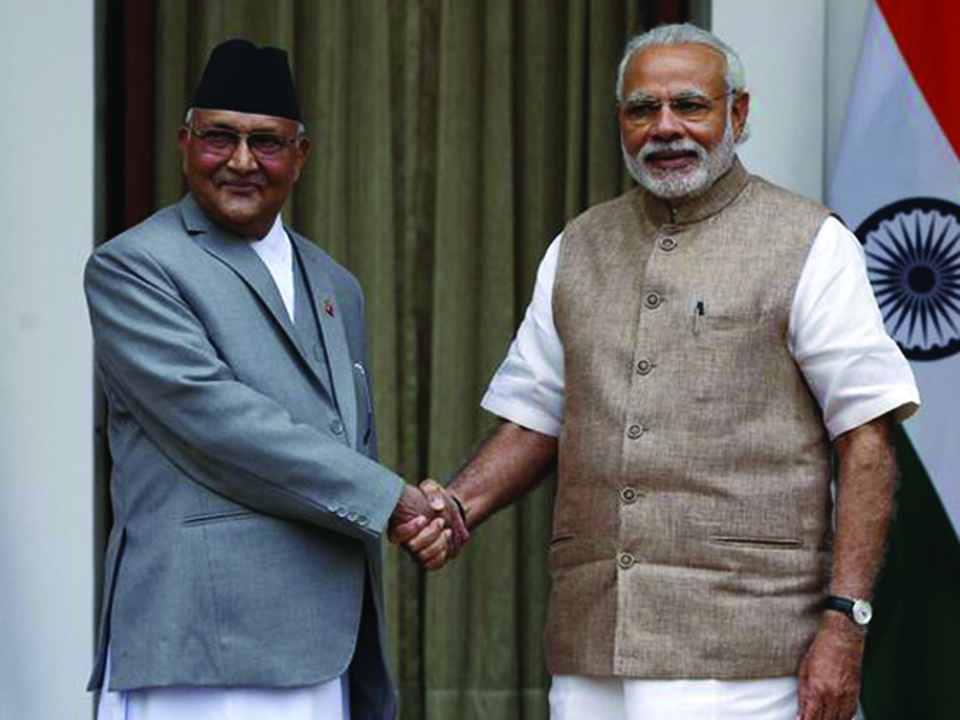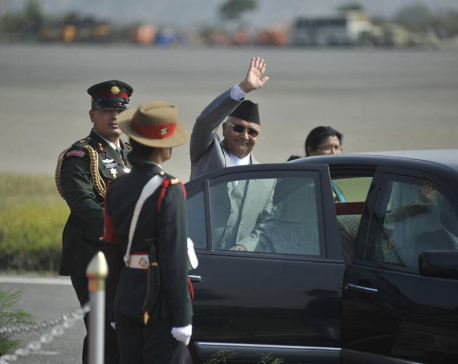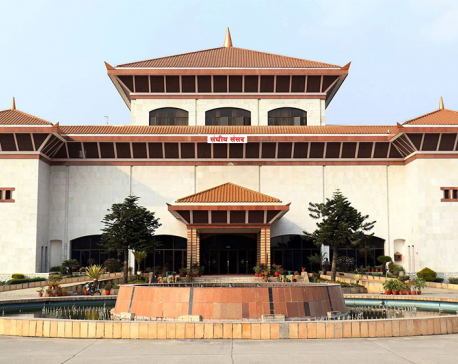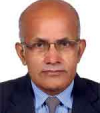
OR

Prime Minister Oli holds almost the same strong clout in Nepal as his counterpart Narendra Modi does in India
Prime Minister KP Sharma Oli is embarking on official visit to New Delhi on April 6—his first foreign trip after assuming office for the second time in February. Every new Nepali PM visits New Delhi as a norm to keep the special relations the two countries have in almost all spheres—social, cultural, religious, economic and political. But this visit is more important than usual ones.
The communist alliance he led emerged as the strongest power in local, provincial and parliamentary elections and he emerged as the strongest Prime Minister, perhaps next only to Jang Bahadur Rana who ruled the country between 1846 and 1877 and BP Koirala who ruled for short period in 1960.
The left alliance—comprising CPN-UML and Maoist Center—commands over three-fourth majority support in the parliament. Additionally, the left front has not only been able to form governments in six out of seven provinces but also won most of the seats at local levels. This has heralded the age of political stability in Nepal after a long time. For the last several years, none of the governments lasted for more than a year on an average.
In a way, Oli holds almost the same strong clout in Nepal as his counterpart Narendra Modi does in India. This could provide ample of opportunities to Nepal and India to benefit from cooperation in infrastructure development, organic farming, industrial development, trade, hydro-power, tourism, green economy, and security among other sectors. More jobs can be created in Nepal and India if the two countries are able to cooperate in joint venture projects.
Rising India
Nepali PM’s visit to India is watched with greater interest than similar visits made to other countries. This is not simply because we have age-old ties in social, cultural, economic and political fields and unique open border system, but also because India has emerged as the centre of gravity at the global level. For nearly three decades, India has been maintaining higher economic growth. By achieving 7.4 percent rate of economic growth at the present time, India has not only left China behind but also emerged as the fastest growing economy.
India has proved that higher economic growth rate is within the reach of a democratic country. Other South Asian countries with democratically elected governments—like Bhutan, Bangladesh and Sri Lanka—have also proved it. In Nepal, where economic growth fell to minus points following deadly earthquakes of April 2015. The current growth rate of four percent is encouraging.
India has done a miracle in economic growth. Known as a country of “snake charmer” until three decades ago, India today is the world leader in software technology. It is also a major power in space research, science and technology and defence. Each day India has been building over 22 kilometres of roads and over seven kilometres of railways. Indian investment in foreign countries is growing each successive year. With world’s largest pool of young population the future of India looks really bright. It is likely to become the second largest middle-class market at the global level in the next five years.
Because of healthy competition for development among different states, India has made massive strides in a growth sector. Union Government in India provides 42 percent of its funds to the states. Nepal might emulate this practice as we are working to institutionalize federal system.
As India’s nearest neighbor, Nepal has already been reaping advantages of Indian growth. Over six millions of our population, including the poor and unskilled ones, has been employed in India. Remittances received through our workers in Indian job market have a substantial share in Nepal’s Gross Domestic Product.
Areas of cooperation
Given the fact that the Indian government has included Nepal in its Leave Travel Allowance category, many of the Indian tourists would like to come to Nepal. If Nepal is able to build necessary tourism infrastructure, millions of Indian government employees could visit Nepal. PM Oli should raise this issue with priority while in Delhi.
Besides, Oli and Modi could also make effort for harnessing Nepal’s hydro-power. Even after 100 years practice of hydro-power production, Nepal is able to produce only 846 MW of hydro-power so far while it has the potentials for over 42,000 MW.
Unfortunately, Indian investments in Nepal have at times been targeted by certain elements that want to create a thaw in relations between the two countries. This has made the Indians reluctant to invest in Nepal. If Nepal can ensure that Indian investment in hydro-power and other sectors is safe and that there has been marked improvement in governance, many Indian investors will be attracted towards Nepal.
India’s experience in flood control and river-linking sectors, apart from organic farming, green and white revolution is well acknowledged globally. Cooperation in some of these sectors should be explored.
One of Nepal’s major challenges is its burgeoning trade deficit with India. In 2016-17, the country witnessed trade deficit of over Rs 900 billion, mainly because Nepal has very little to export to India. This can be solved if production and productivity in exportable items could be enhanced. In this context, Oli can talk to the Indian side for the establishment of Export Processing Zones (EPZs) at least in each of the seven provinces to attract Indian investment for targeting mammoth Indian market with 125 billion people.
Nepal has over four million population right across its border, including in Uttar Pradesh, Bihar and Bengal. In this light, the EPZs could prove immensely useful in reducing the gap in trade deficit as the production of goods at the EPZs could easily get their inroads in the neighboring market where even the transport cost will be least due to the geographical advantage. We should be able to take advantage from the open border system and growing connectivity through transport and communication. This will help us export goods, services and surplus power and thereby reduce the deficit in the balance of trade.
PM Oli has a historic opportunity to give a push to development agenda. India is likely to provide all possible support to Nepal as per its neighborhood first policy. Both India and Nepal should give new impetus to development efforts. For this, Oli and Modi should think of facilitating emotional integration among the people of the two countries. Developing Ramayana and Buddhist circuits could be a step towards that direction.
Nepal and India share the warmest of the relations. There is no alternative to it either.
The author is Executive Director of Centre for Economic and Technical Studies in Nepal
You May Like This

PM Oli leaves for India on three-day state visit today (with photos)
KATHMANDU, April 6: In his first foreign visit after assuming office, Prime Minister K.P. Sharma Oli is leaving for India... Read More...

PM Oli to brief parliament on India visit agenda today
KATHMANDU, April 3: Prime Minister KP Sharma Oli is scheduled to brief both upper and lower houses of the federal parliament... Read More...

Oli to brief parliament on India visit agenda today
KATHMANDU, April 3: Prime Minister KP Sharma Oli is scheduled to brief both upper and lower houses of the federal parliament... Read More...






Just In
- Challenges Confronting the New Coalition
- NRB introduces cautiously flexible measures to address ongoing slowdown in various economic sectors
- Forced Covid-19 cremations: is it too late for redemption?
- NRB to provide collateral-free loans to foreign employment seekers
- NEB to publish Grade 12 results next week
- Body handover begins; Relatives remain dissatisfied with insurance, compensation amount
- NC defers its plan to join Koshi govt
- NRB to review microfinance loan interest rate












Leave A Comment